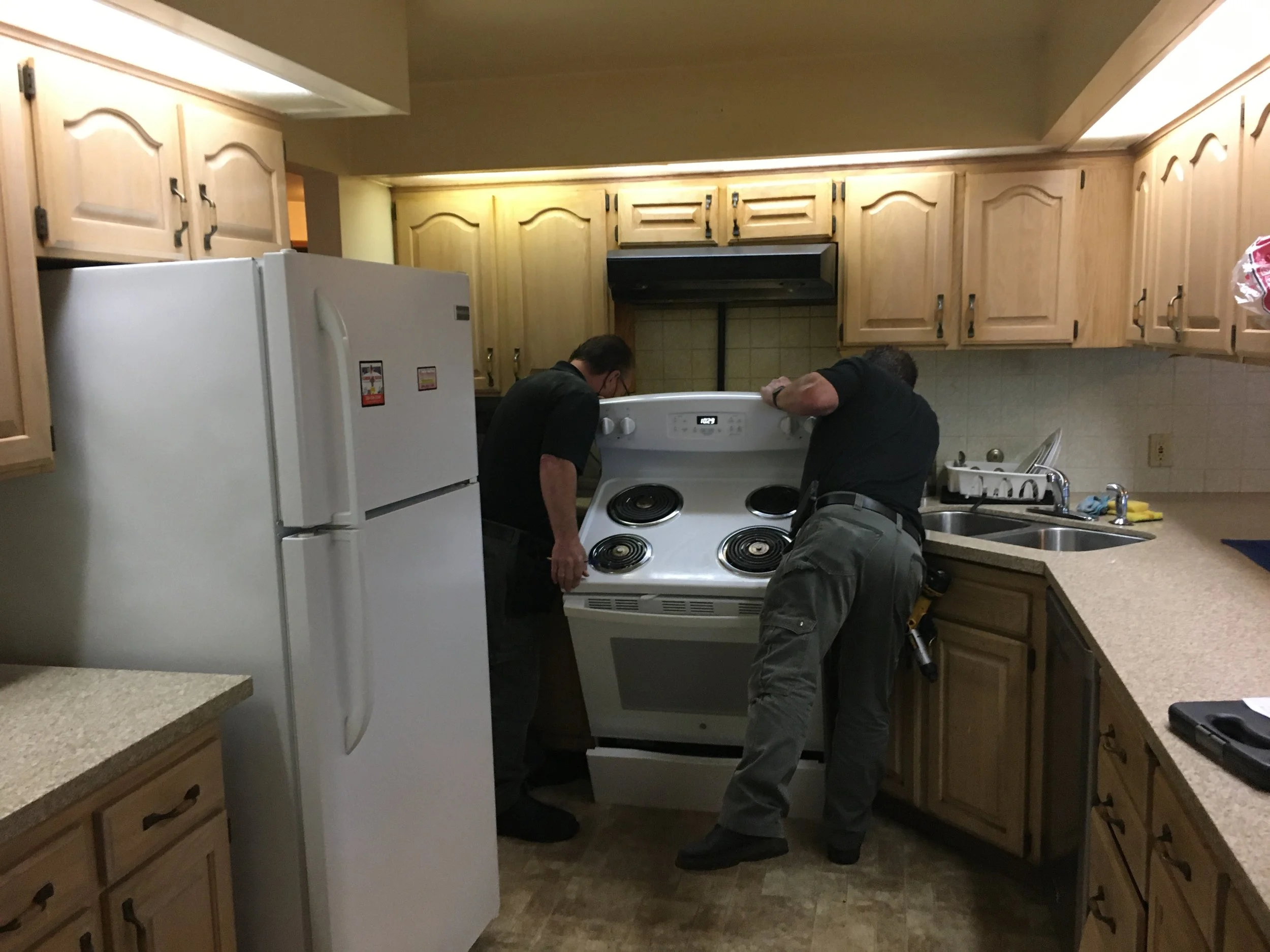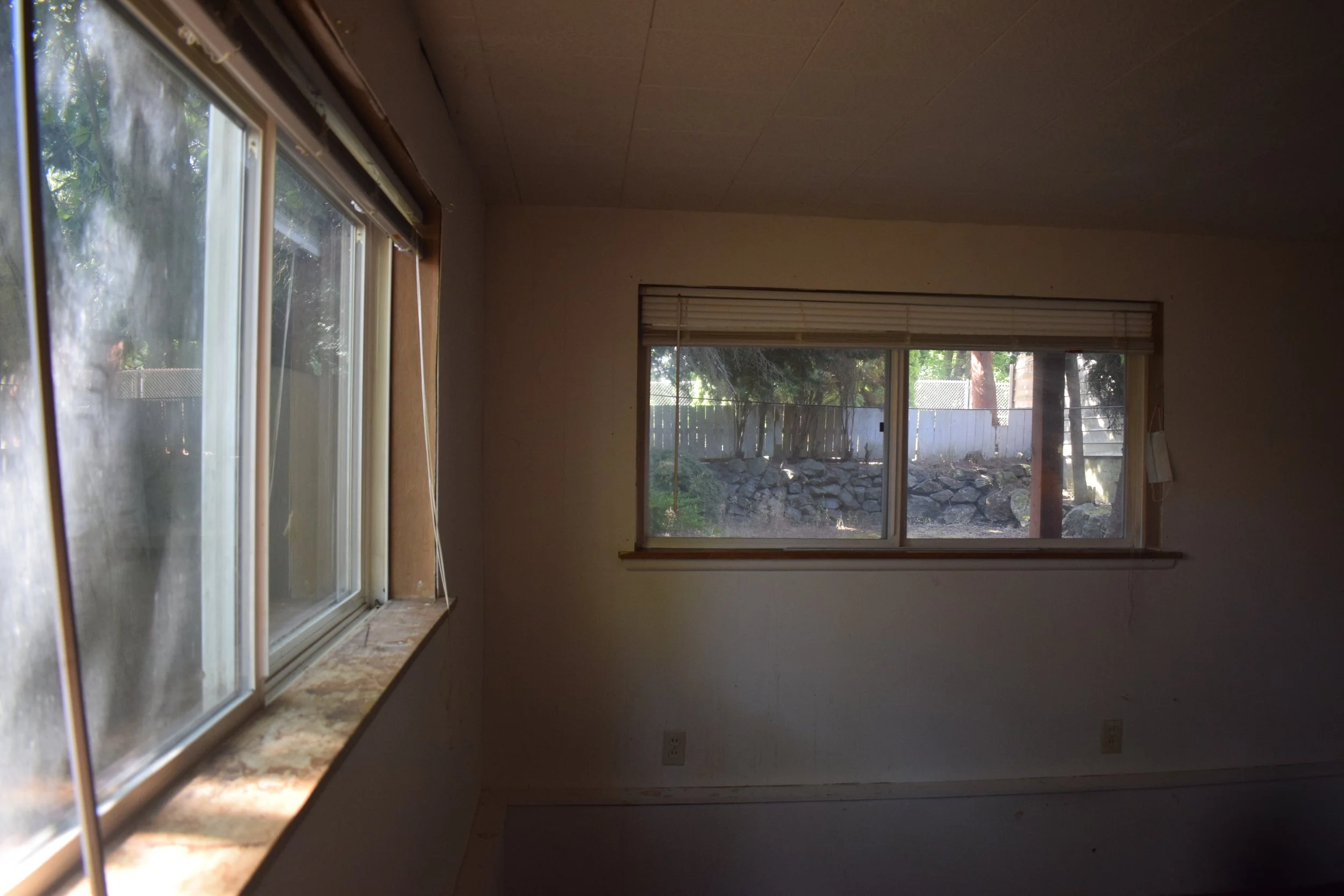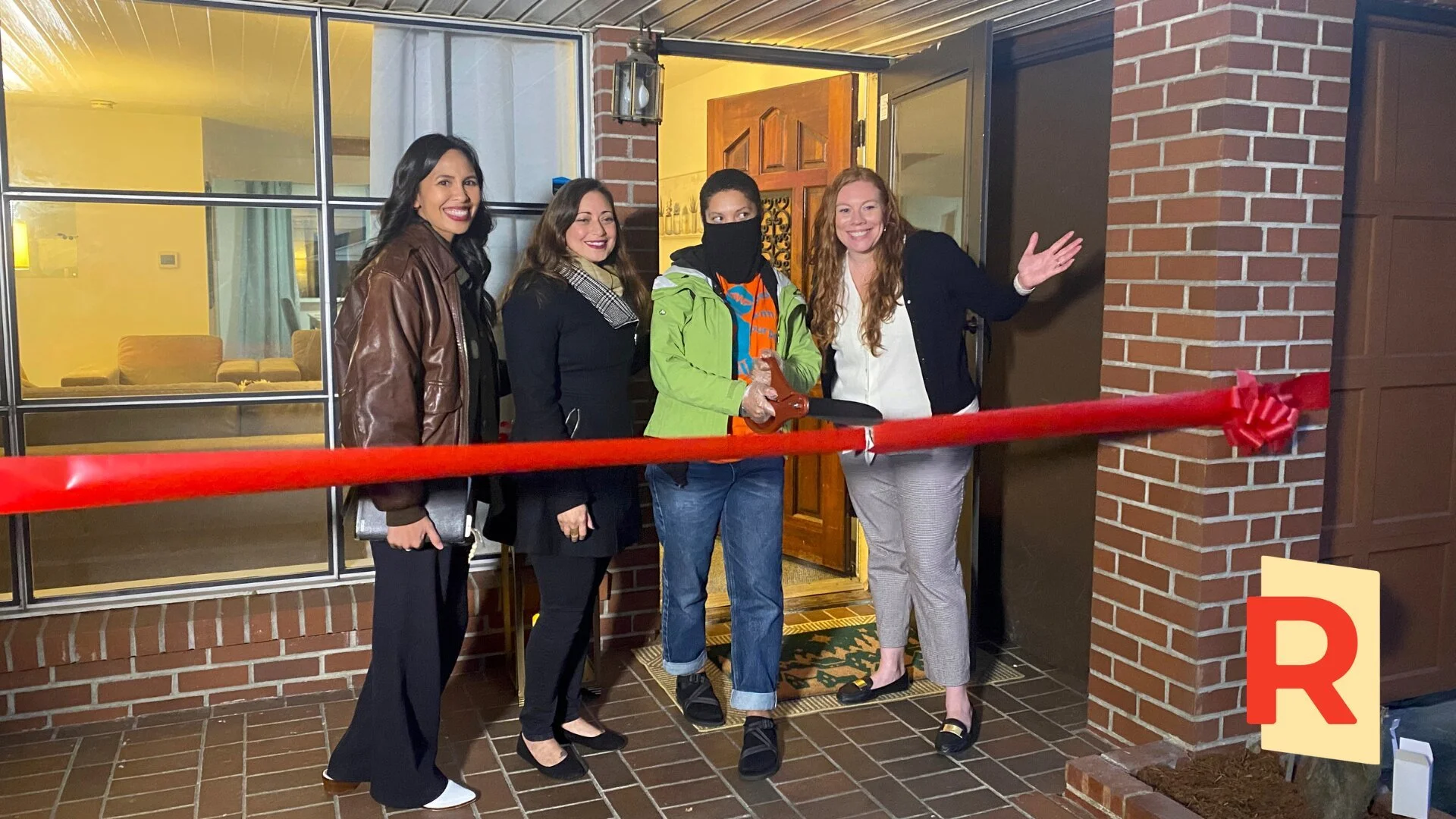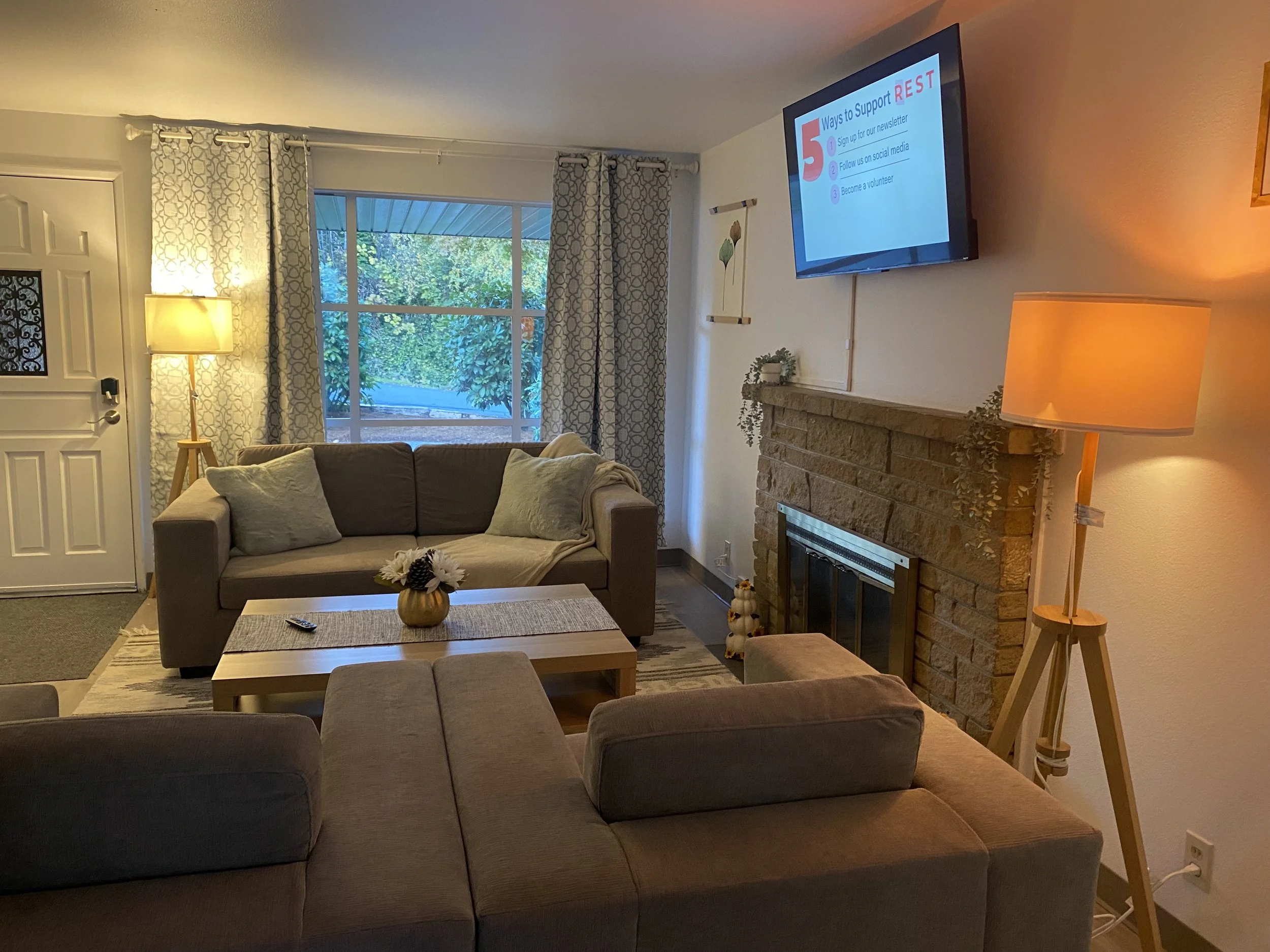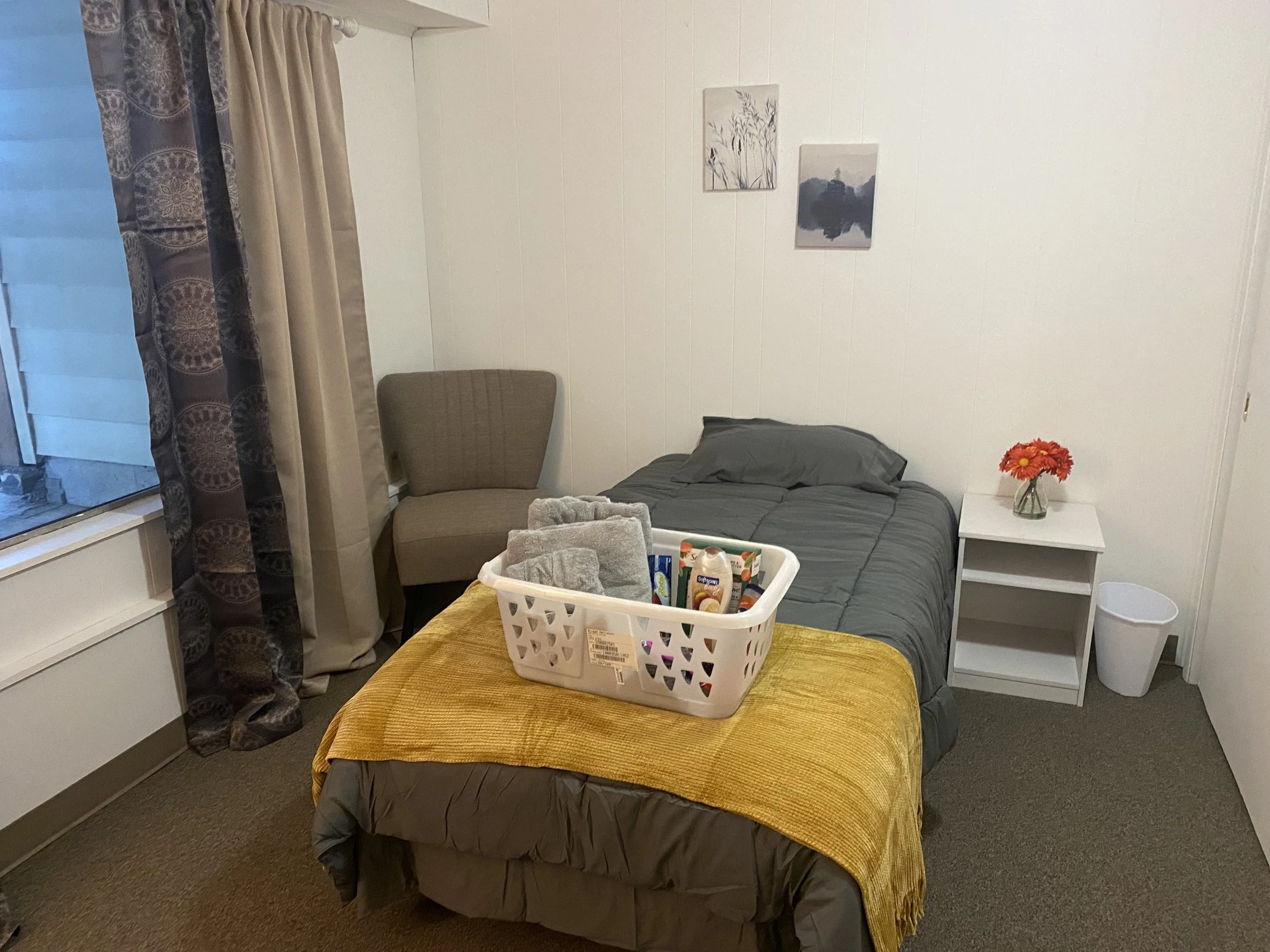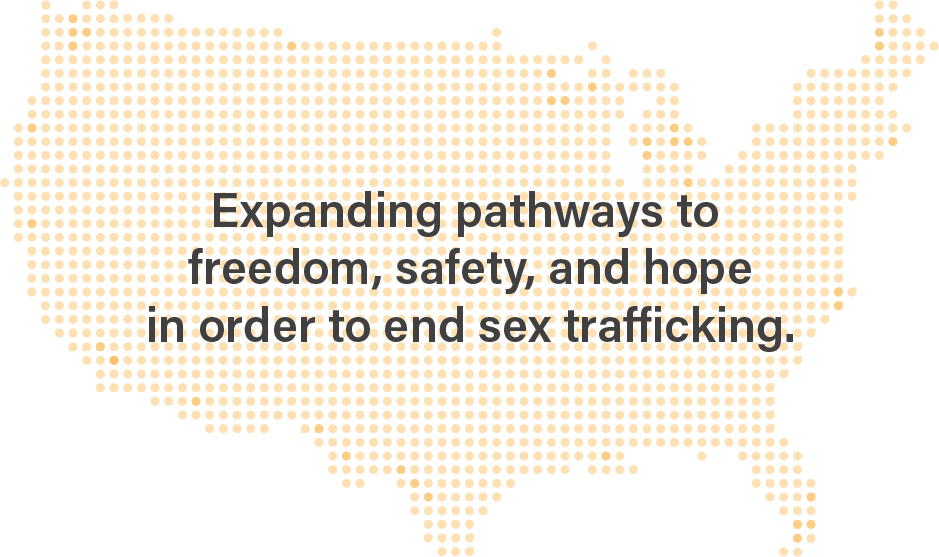I love making art available to the women who come to REST and participate in the REST Art Spa. Art is a unique physical expression of the artist’s emotional reality and spiritual vision.
Change Starts With Awareness
A Safe Place to Call Home
At REST, we know that safe and stable housing is a critical piece of the puzzle when recovering from trafficking and building economic independence. In 2012 we opened our first transitional housing – REST House South. On Wednesday, November 16, we celebrated the opening of our second house, REST House North, with a ribbon cutting and open house.
REST House North was made possible through a collaboration with Compass Housing Alliance, who invited REST to take over management of the house, and dedicated funding from The Jensen Project. In December 2021, REST held a fundraiser to cover additional costs to remodel and furnish the new living spaces. Now it is ready to welcome the first residents.
“Dozens of volunteers have donated labor to help with the flooring and the painting. It’s just been a real team effort. Our staff has really come together to make sure this feels like home.”
The ribbon-cutting ceremony and open house drew together donors, supporters, volunteers, staff, and survivors, including Cassie, who will be moving into REST House North.
“Anyone’s journey to REST can be complicated. The vulnerability that comes with accepting yourself as an agent for your own destiny is a lot. Learning responsibility, accountability, and more while grasping at stability......emotions are running high. REST makes sure you don’t have to be alone.”
REST Community Services Supervisor Jessica Clayton believes safety, support, and stability are factors whose importance cannot be overstated.
“I see more than just a collection of walls, rooms, and roof. I see infinite opportunities. I see a place, not just to rest but to grow, a safe haven and a chance for stability. It is my hope and belief that all those who work with us see the same too.”
REST House North and South are completely furnished with a total of 11 beds for adults ages 18 and older of all genders to stay rent-free for up to a year while they work on their personal goals and access supportive services through REST and other community partners.
REST House North has five private bedrooms giving each survivor-resident the privacy and security they need to rest, recover, and stabilize. The rest of the house is a communal living space that includes a kitchen, dining area, upper and lower living rooms, bathrooms, and an office/craft room.
While living in either house, residents can work with REST Housing Specialists to prepare for a future transition into permanent housing. They also have access to REST’s services, including intensive case management, employment services, peer support, and more.
“It is impossible to gain or maintain employment, address mental health or substance use needs, or pursue any other goals without the safety of a secure location to call home.”
The Future of REST Part 3: Announcing a Change in Leadership
The last blog in our series is one that hits closer to home for me. Twelve years ago, I felt a calling in my spirit to start REST. I knew it would require sacrifice, bring joy, and take over my life. I was scared but said yes. I could not have imagined that we would grow to build out a continuum of care serving over 600 survivors a year. And now that REST has adopted a new mission to expand pathways to freedom, safety, and hope in order to end sex trafficking, with specific opportunities to multiply impact across the United States, I believe it is the right time for a new leader to step in as Executive Director.
While it will be a significant change for me to step out of the Executive Director role, I am confident this is a strategic move for our mission. I will be joining REST’s Board of Directors to initiate and help drive national impact projects and partnerships forward. This new seat will be the best way to leverage my strengths for our next phase of growth. There are three reasons why I think this is the right move.
First, at my core I am a builder and an entrepreneur, bringing new ideas to life in order to create meaningful impact. I’m wired to steer toward strategy, fast growth, and impact, which has served us well so far, though I recognize at times it has put a strain on our team and our systems to grow so quickly. This next stage for REST, as it would be for any organization at this stage of its life cycle, is to have steady upward growth through incremental change, maintaining and upgrading, and refining. REST deserves a leader who is wired for this type of growth, ideally someone who has experience growing an organization of our size to the next level with both sustainability and impact.
Second, I have prioritized reputation and credibility over awareness, but all are important. We will maintain thoughtfulness and quality in our approach, but it’s time for the mission of REST to have a leader who is eager to be the face of the organization and build stronger communications and public relations activities so that we can expand our reach and draw more people into our work. This is an essential part of the next season for REST and I know this is just not how I am wired. I’m excited for us to have an Executive Director who naturally seeks out and creates more opportunities to tell the story of REST.
Third, it’s natural for an organization to experience “founder syndrome” where the founder becomes a central knowledge source and we start to get stuck in the ways we’ve always done things. Stepping aside opens the door for new ideas, new systems, and new opportunities for courageous leadership and decision-making to flourish throughout the organization. By joining the Board I can still provide continuity of leadership and be ready to fuel those new ideas with support and strategy.
It has taken me some time to reach this decision and I am at a place where I feel great about what this will mean for REST and for me. The Board of Directors has been supportive and agrees with the benefit of this move for the organization. You can read a note from the Board to learn more about their perspective on the transition.
The Board has initiated a search committee and will be working with a firm to implement a national search for our next Executive Director, which we anticipate will take about six months. I will remain in the position until our next Executive Director is in place.
To all of REST’s partners, supporters, employees, and volunteers - you have made the work of REST possible and it has been my deepest honor to walk alongside all of you, and the survivors who have entrusted us with their care. As we prepare to expand our reach and multiply our impact, it is a perfect time for all of us to deepen our investment with REST and advance the mission. Together we will expand pathways to freedom, safety, and hope in order to end sex trafficking. Because everyone is worthy of love and deserves to live a life without exploitation.
Amanda Hightower
Founder & Executive Director
The Future of REST Part 2: Our Plan to Expand Pathways
What would it mean for REST to eradicate systems of harm, rather than merely treat symptoms of harmful systems? This was the question posed to us by LTHJ Global, a local DEI Consulting firm, who led us through an initiative to imbed diversity, equity, inclusion, and access throughout our culture and practices at REST in 2020-2021.
We spent several months last year, gathering feedback from stakeholders to inform our strategic plan. We interviewed survivors, REST clients, other service providers, community partners, supporters, and national leaders in the anti-trafficking field. Our question: If we were going to end sex trafficking by 2040, what needs to happen? And what role should REST play?
It may not be realistic to end sex trafficking by 2040, and that’s okay. The question was meant to guide us toward the activities that would have the highest impact. Economic inequality & poverty emerged as the most significant system of oppression that contributes to sex trafficking. When asked what activities REST should contribute to disrupting or dismantling the system of economic inequality & poverty, respondents said, in this priority:
Survivor Services
Education
Awareness & Culture Change
Policy Advocacy
The strategic plan for REST mirrors these priorities and will guide our expansion in three ways over the next five years.
1. Going Multi-Site with Survivor Services
Everyone is worthy of love and deserves to live a life without exploitation. This underlying belief continues to fuel everything we do at REST, so direct service work with victims and survivors of sex trafficking will remain core to our work. We also believe that services with survivors are a strategic way to help end sex trafficking. A group of survivors who recover from trafficking and use their voice and experience to advocate for policy change and influence culture can significantly propel the effort to end sex trafficking in the United States.
Based on a decade of gathering feedback from survivors who have accessed services at REST, we have confidence in the impact of our service model and will prioritize investing in services that consistently deliver the greatest long-term impact. We will also identify another city (or two) within the United States to replicate our service model and demonstrate that positive outcomes are not geographically dependent. This will not only give us the opportunity to serve more survivors in places where there is the greatest need, but it will also set REST up to have greater influence with policymakers.
2. Launching a Training & Technical Assistance Division
In 2023 we plan to launch a training and technical assistance program to build capacity with other direct service providers across the country. We envision providing training and consultation with 100 providers over the next five years, multiplying our impact by strengthening the teams who are providing critical services and partnering with them to enhance their work with survivors. Two features of our curriculum include Motivational Interviewing Informed Wraparound (MiiWrap), an evidence-based approach to care, and a uniquely designed Impact Management process that supports continuous improvement and highlights the long-term impacts of services.
This won’t be an entirely new activity for us, as we’ve frequently mentored and walked alongside other nonprofits to share promising practices and learn from their expertise as well. In fact, we currently get multiple requests each week for training and consultation. With this new division, we will build dedicated resources and staff so we can say yes.
3. Building Strategic Partnerships for High Impact Projects
The final pillar in our plan, which is estimated to launch in 2-3 years, is to expand strategic partnerships, focusing on developing and supporting national initiatives that will help end sex trafficking. Through this effort, we hope to work with new and existing partners to implement unique projects that are likely to contribute to the end of sex trafficking. This may include technology projects, like TIRA (an app we developed with volunteers from Microsoft and UW), policy advocacy initiatives, working with influencers to accelerate awareness of human trafficking, and driving culture change through marketing and media campaigns.
The litmus test for any partnership or any activity we engage in is this: will it contribute to the end of sex trafficking?
Here’s a visual of our strategic plan framework as we move forward.
We want to give a special thanks to The Jensen Project who provided REST with a grant to fund our strategic planning process, and Stacey Pearson, with the Paterson Center, who led REST leadership through a three-day StratOp process, which enabled us to formulate this 5-year strategic plan. We are grateful and excited for the future of REST.








